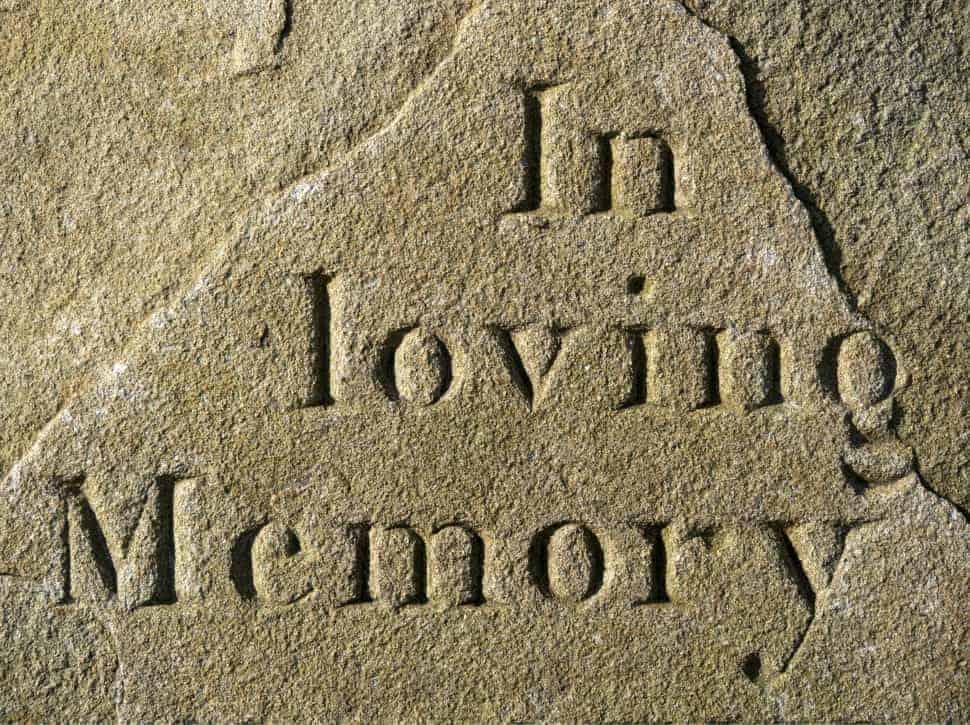When a loved one passes away, even the most mundane and simple tasks can feel overwhelming and painful. When struggling to tidy the house or cook a meal is difficult, more complex and emotional tasks, such as dealing with your loved one’s belongings, can seem impossible.
In some cases, you might not have any time limits placed on when you need to deal with their domicile and sort through pack up their belongings. You can wait until you are fully ready to get started and take on the task in small increments. However, in most situations, you only have a fixed amount of time to clear everything out. You’ll have to deal with your loved one’s belongings, even if you don’t feel quite ready.
Your loved one’s home will be filled with reminders of them – their scent, their slippers, their last moments alive. There will be many memories, difficult emotions, and pain associated with sorting through your loved one’s possessions, but it can also be a cathartic, healing act.
Remembering a loved one is deeply personal, and it is different for everyone. Whether you choose to create ashes jewellery, dedicate a memorial bench in their honour, or commemorate them in your own way, we know that it is never easy to say goodbye. Here are our suggestions and tips for what to do with your loved one’s belongings.
Start by thinking about ‘everyday reminders’
You might think that it is the cherished keepsakes and special heirlooms that will be the most painful belongings to go through, but that is not always the case. Yes, photo albums and Christmas decorations will be laden with memories, but most people find that dealing with their loved one’s everyday possessions is even more difficult.[1]
Seeing their half-used tube of toothpaste, a packet of medication, their hairbrush covered in strands of hair, and their worn clothing in the laundry hamper – these deeply personal items can be the most challenging emotionally. Their partially read magazine and set of house keys are sure to evoke heaps of memories and feelings. These seemingly small but exquisitely painful everyday reminders can be hard to throw in the bin, even though they are of no use to anyone.
This is a good time to rally your friends and family members. They have likely been feeling helpless about what to do to help you in your most difficult time, and will jump at the opportunity to lend a hand. If the idea feels right for you, ask one or two people to do the rounds of your loved one’s home or room before you get there. They can carefully do a sweep for the mundane reminders of your loved ones that have no sentimental value, respectfully placing them in the bin before you arrive.
They can place any items that they are unsure of in a box to deal with later. This could include their slippers, a scarf, their hairbrush, and other items that you might want to keep for personal and sentimental reasons.
How to get started with your loved one’s belongings
It would be lovely to be able to take as long as you want with this task, but in most cases you have to deal with it sooner than later. Make a list of the most practical details before you get started.
Find out if you need to deal with their bank accounts, bill payments, estate agents, etc. Dealing with these issues first will ensure that you don’t have any nasty surprises later. When you come across paperwork and any official communication, always set it aside in a labeled box.[2]
Next, decide if you want to undertake this task on your own, or if you want the support and company of your close friends. If you have a friend or family member who enjoys organising and sorting, maybe they would be the best choice to ask for help.
There are likely other people who can’t be present when you are sorting through the possessions. Make sure that you establish clear communication with the others involved, as throwing away items of significance for them can be hurtful and cause tension. We recommend starting a shared Google doc so that nothing gets lost in the shuffle, and everything is clearly in writing. This simple step will prevent so many problems – don’t neglect to do this.
Speaking of starting a document, you should also do this for yourself. Make a list of what needs to be done, and start a prioritised plan that will help guide your process. Most people choose to do this room by room, but you might have a different strategy.
Finally, remember to pace yourself as you carry out this trying series of tasks. It can be very hard on your heart and soul, and can be overwhelming. Take it as slowly as your timeline allows. You might want to power through the experience to ‘get it over with,’ but take as many breaks as you can to recharge your spirit.
Organise your loved one’s belongings into 6 categories
We suggest organising your loved one’s belongings into 6 broad categories.[3]
- For me
This is the pile of items that you want to keep. They might have practical use for you and your family, or sentimental value. Be mindful that you don’t add too many things to this pile; more advice on this is below.
- For others
Here is where your Google Doc information will come in handy, ensuring that you set aside the items requested by others in your loved one’s life.
- Sell
New items and objects in good condition, as well as collectables that no one else wants to keep, can all be sold on eBay, Facebook Marketplace, or Gumtree.
- Donations
Gently used clothing, shoes, and household items can be donated to your local charity. If you loved one had a favourite charity, find out if they are accepting donations. You could also consider donating artefacts or antiques to a local museum.
- Throw Away
Sadly, some items will be too damaged or used to sell, donate, or use again. Remember – donating heavily used clothing to charity shops can actually cost them money, so ensure that you throw away anything that you yourself wouldn’t want to buy.[4]
- The ‘Unsure’ Box
There will always be items that you simply can’t make up your mind about on the spot. Having an ‘unsure’ box will allow you to revisit these items at a later time. Don’t get carried away with this box and rely on it as an indecision crutch – limit the number of items in the box to 10. Once you reach 10 items, you will need to revisit the box every time you want to add another.
Resisting the urge to keep too many things
Many people end up with too many items in the ‘For me’ pile. If you are the sentimental type, you might find it hard to part with your loved one’s objects, and the pile will get bigger and bigger. To prevent this from happening, ask yourself the following questions:
- Do I have space for this?
- Do I have more than one of these?
- Would a photograph of the item suffice? (this works well with cards and letters)
- Could you keep a small sample of the items? For instance, take a few swatches of clothing or blankets.
Be prepared for any emotions that might arise – but don’t get sidetracked
Even the toughest person can be caught off guard when they discover a stack of their grandparents’ love letters, their childhood school projects, or their parents’ genealogy research. These documents can bring tears to your eyes, but be wary – now is not the time to start pouring over their contents. It can be very easy to get sidetracked, and hours of time can escape you. Set them aside in a special pile, and go through them when you have plenty of time to walk down memory lane.[5]
Sorting through your loved one’s belongings after they pass is never easy. Remember that this process is challenging for everyone, and give yourself permission to mourn in your own way. You might experience tears, but don’t be surprised if you also find yourself with a smile on your face, or even laughing at happy memories.
We wish you all the strength and support as you go through this process.
Reference list
Garber, J. (n.d.). These Are the Important Papers You Need to Locate After Someone Dies. [online] The Balance. Available at: https://www.thebalance.com/what-do-you-need-to-do-when-someone-dies-3505207 [Accessed 17 Feb. 2020].
Horseley, G. (2014). Cleaning Out a Deceased Loved One’s Closet: 12 Tips to Make the Process a Little Easier. [online] HuffPost. Available at: https://www.huffpost.com/entry/cleaning-out-a-deceased-l_b_6065480 [Accessed 17 Feb. 2020].
Jay, P. (2018). Here’s where your donated clothing really ends up. [online] CBC. Available at: https://www.cbc.ca/news/canada/ottawa/donated-clothing-where-it-ends-up-1.4662023.
Stevens, M. (2017). Take a Walk Down Memory Lane. It Can Be Healthy. The New York Times. [online] 25 May. Available at: https://www.nytimes.com/2017/05/25/smarter-living/nostalgia-memories.html [Accessed 17 Feb. 2020].
What’s Your Grief (2013). Dealing with Stuff (literally): sorting through a loved ones belongings. [online] What’s Your Grief. Available at: https://whatsyourgrief.com/sorting-through-belongings/ [Accessed 17 Feb. 2020].
[1] https://whatsyourgrief.com/sorting-through-belongings/
[2] https://www.thebalance.com/what-do-you-need-to-do-when-someone-dies-3505207
[3] https://www.huffpost.com/entry/cleaning-out-a-deceased-l_b_6065480
[4] https://www.cbc.ca/news/canada/ottawa/donated-clothing-where-it-ends-up-1.4662023
[5] https://www.nytimes.com/2017/05/25/smarter-living/nostalgia-memories.html



